The 1936 Buffalo nickel’s value ranges from under $1 to thousands depending on condition, mint mark, and errors. Philadelphia (no mint mark) produced 119 million coins, while Denver (“D”) and San Francisco (“S”) had lower mintages. Circulated coins typically worth $1-$20, while uncirculated pieces range from $22 (MS-60) to $3,000+ (MS-67+). The most valuable is the 1936-D “3 1/2 Legs” error, worth $500+ even in poor condition, with pristine examples reaching $20,700. Other valuable errors include Repunched Mint Marks ($30-$3,000) and Doubled Die varieties. To assess your coin, locate the mint mark below “FIVE CENTS” on the reverse, examine condition focusing on the buffalo’s details, and inspect for errors using magnification.
That worn nickel in your pocket change could be worth more than five cents—potentially much more. The 1936 Buffalo nickel represents the final year of one of America’s most beloved coin designs, and certain examples, especially those with rare errors, have sold for over $20,000 at auction. Understanding what separates a common piece from a valuable collectible starts with knowing where to look.
Understanding the Three Mint Varieties
The 1936 Buffalo nickel came from three different United States Mints, each leaving its distinctive mark on production quality and rarity.
Philadelphia struck the highest number at 119,001,420 pieces—the largest mintage in the entire Buffalo nickel series. These coins carry no mint mark, which ironically makes them easier to identify. However, high production volume came at a cost: Philadelphia’s 1936 strikes are notorious for weak details, particularly on the buffalo’s head and the Native American’s cheekbone. A well-worn example typically sells for $0.75 to $1.25, while pieces in Very Fine condition (showing clear horn details and three full legs) range from $8 to $20.
Denver produced 24,814,000 coins, marked with a small “D” below “FIVE CENTS” on the reverse. Denver’s dies delivered sharper strikes than Philadelphia, making uncirculated examples particularly desirable to collectors. Standard circulated pieces match Philadelphia values at $1 to $15, but the Denver mint is home to the series’ most valuable error.
San Francisco had the lowest production at just 14,930,000 pieces, identified by an “S” mint mark in the same location. Scarcity doesn’t automatically mean higher value for circulated coins—a Good grade San Francisco nickel still sells for around $1.50—but collectors pay premiums for high-grade uncirculated examples due to their rarity.
Uncirculated Coin Values by Grade
The real separation in value occurs in the uncirculated range, graded from Mint State 60 (MS-60) to the theoretical perfect MS-70.
| Grade | No Mint Mark | D Mint Mark | S Mint Mark |
|---|---|---|---|
| MS-60 | $22 | $25 | $28 |
| MS-63 | $35 | $40 | $45 |
| MS-65 | $75 | $85 | $95 |
| MS-66 | $350 | $425 | $550 |
| MS-67 | $1,200 | $1,500 | $2,400 |
| MS-68 | $3,500+ | $4,000+ | N/A |
These prices reflect Heritage Auctions and PCGS CoinFacts data from 2023-2024. The jump between MS-65 and MS-66 represents the scarcity threshold—fewer than 5% of professionally graded 1936 Buffalo nickels achieve MS-66 or better.
The auction record for a Philadelphia example stands at $10,575 for an MS-68 graded by PCGS, sold through Stack’s Bowers in January 2022. Denver’s finest known specimen, also MS-68, brought $9,400 in the same year. San Francisco examples rarely appear above MS-67, with a pristine MS-67+ selling for $4,800 in 2023.
Strike quality matters enormously at these grade levels. Collectors examine the buffalo’s shoulder and front leg muscles, which should show complete separation. On the obverse, the braid strands behind the Native American’s neck must be fully defined. Even a single weak area can drop a coin from MS-66 to MS-65, cutting value by 75%.
The Famous 1936-D Three and a Half Legs Error
This variety has achieved legendary status among error coin collectors. During production at the Denver Mint, a die became damaged and was over-polished in an attempt to restore it. This excessive polishing removed most of the buffalo’s right front leg, leaving only a partial stub—hence “three and a half legs” rather than four.
The error is dramatic and unmistakable when you know what to look for. The buffalo’s front right leg should extend from the body to the ground with clear definition. On the error variety, this leg appears partially or almost entirely missing, with only a faint remnant visible near the body.
Value progression demonstrates serious collector demand:
- Good-4 grade: $525-$650
- Fine-12 grade: $775-$900
- Very Fine-20: $1,100-$1,400
- Extremely Fine-40: $1,650-$2,200
- About Uncirculated-50: $2,800-$3,500
- MS-60: $4,200-$5,000
- MS-63: $8,500-$12,000
- MS-65: $18,000-$25,000
The auction record belongs to an MS-63 specimen that sold for $20,700 through Heritage Auctions in April 2009. More recently, an MS-64 example brought $19,200 in January 2024, confirming sustained collector interest despite market fluctuations.
Authenticating this variety requires careful examination. Counterfeiters have attempted to remove legs from common 1936-D nickels using grinding or chemical etching. Genuine examples show polishing marks flowing in the die’s direction and maintain proper metal flow around the missing leg area. When in doubt, submit high-value candidates to PCGS or NGC for professional authentication—the $40 grading fee is worthwhile insurance against a $500+ mistake.
Other Valuable Errors and Varieties
Beyond the famous three-legged variety, several other errors command premiums from specialists.
Repunched Mint Marks occur when the “D” or “S” punch didn’t seat properly on the first strike, requiring a second impression. This creates visible doubling of the mint mark, sometimes appearing as a shadow or a distinct second letter slightly offset from the primary mark.
The 1936-D RPM-001 variety shows pronounced doubling southwest of the primary “D” and sells for $85-$150 in Fine condition, reaching $400-$650 in MS-63. The 1936-S RPM-002, with doubling visible north of the primary “S,” ranges from $75 in Very Fine to $525 in MS-64. These require 10x magnification to properly diagnose—smartphone cameras struggle with the necessary detail.
Doubled Die Obverse varieties show doubling on “LIBERTY” or the date. The strongest known 1936 DDO (designated DDO-001) displays clear separation on “LIBERTY” and brings $125-$200 in circulated grades, up to $850 in MS-64. Minor doubling varieties exist but typically add only $15-$35 to base value.
Off-Center Strikes happen when the planchet (blank coin) wasn’t properly seated in the collar during striking. A 10% off-center error with full date visible sells for $75-$150. More dramatic 25% off-center examples with complete date reach $200-$350, while 50% off-center pieces—extremely rare for this issue—have sold for $1,200-$1,800.
Strike-Through Errors occur when foreign material (grease, cloth fibers, or metal fragments) sits between the die and planchet during striking. The resulting coin shows a smooth area where detail is missing. Minor strike-throughs add $15-$40 to value, while dramatic examples covering significant portions of the design can bring $100-$250.
How to Properly Evaluate Your 1936 Buffalo Nickel
Start with mint mark identification. Flip the coin to the reverse (buffalo side) and examine the area below “FIVE CENTS.” You’ll need good lighting—natural sunlight or a bright LED works best. No letter means Philadelphia, a “D” indicates Denver, and an “S” marks San Francisco. The letters are small, typically 1-2 millimeters tall, so reading glasses or a magnifying glass helps for worn examples.
Assessing condition requires understanding which details wear away first. On the obverse, check the cheekbone and hair above the ear—these areas lose definition quickly. The date should be completely readable; partial dates drop value significantly. On the reverse, examine the buffalo’s horn and the tail. A completely flat horn indicates Good-4 or lower, while visible separation between horn and head suggests Fine-12 or better.
For potential three-legged variety identification, you need at least 5x magnification. Compare your Denver mint coin to reference images from PCGS CoinFacts or NGC’s variety listings. The missing leg should be obvious under magnification—if you’re struggling to see it, you likely have a normal strike with heavy wear. Genuine examples show polishing marks in the field around where the leg should be.
Grading circulated coins accurately takes practice. A coin dealers’ rule of thumb: if you can read the full date easily and see definite horn separation, you’re at Fine-12 minimum ($8-$12 value). If the Native American’s cheekbone shows clear definition and all four legs are distinct with space between them, you’re likely in the Very Fine range ($15-$25). Extremely Fine examples retain sharp hair details and nearly complete feather definition—these start around $35-$50 for common mint marks.
For uncirculated candidates, handle only by edges. Skin oils cause toning that reduces grade over time. Any coin that appears never-worn deserves professional grading if it costs less than $100 in slabbing fees. Current PCGS economy service runs $22 per coin (minimum 20 coins), while NGC charges $19 per coin for similar service. A true MS-65 Philadelphia nickel worth $75 raw becomes worth $125-$150 in a certified holder due to buyer confidence.
Where Serious Collectors Find Value Today
The 1936 Buffalo nickel market has matured considerably since the series ended in 1937. Unlike many coins where price guides lag behind actual sales, recent auction results closely match published values—a sign of market stability.
Smart collectors focus on three strategies. First, cherry-picking circulated rolls for the three-legged variety remains viable. Dealers occasionally miss this error when purchasing bulk quantities. A $200 investment in ten circulated 1936-D rolls (400 coins) offers legitimate discovery potential, though success requires patience and good lighting.
Second, registry set building drives premium prices for high-grade common dates. PCGS and NGC both sponsor Buffalo nickel registry competitions where collectors compete for the finest set. This competition has pushed MS-67 common dates to $1,200-$2,500—prices that seemed absurd a decade ago when MS-67 examples sold for $400-$600. The population reports show why: PCGS has graded only 47 Philadelphia 1936 nickels at MS-67, with just 3 finer. Denver’s numbers are similar at 52 MS-67 coins and 2 higher.
Third, variety specialists pursue repunched mint marks and doubled dies with dedicated focus. The variety market operates somewhat independently from the mainstream collector market. A $650 investment in a 1936-S RPM-002 in MS-64 might seem excessive compared to a common MS-64 at $95, but variety collectors view these as separate collecting categories entirely.
Market timing considerations matter less for Buffalo nickels than modern issues. These coins haven’t been struck in 87 years, and the collector base remains strong across generations. Three-legged variety prices have remained within a 15% range over the past five years, adjusting for grade inflation. Compare this to modern commemoratives that swing 50% based on temporary hype.
Building Your Collection Strategically
Whether you’ve inherited a small group of Buffalo nickels or you’re deliberately assembling a set, approach matches budget to goals.
For beginners working with $100-$300 total investment, focus on one nice example from each mint in Very Fine or Extremely Fine condition. This provides visual appeal—details are clear enough to appreciate James Earle Fraser’s artistry—without the premium costs of uncirculated coins. A VF-25 Philadelphia piece ($18), an EF-40 Denver ($28), and a VF-30 San Francisco ($22) create a satisfying basic set for under $70, leaving budget for protective holders and reference books.
Intermediate collectors with $500-$1,500 might target About Uncirculated examples plus one or two entry-level errors. An AU-55 from each mint ($65-$95 each) shows virtually no wear while avoiding the steep jump to MS-63 pricing. Add a circulated three-legged variety in Good condition ($550-$625) and you’ve built a collection highlighting both the regular series and its most famous error.
Advanced collectors operating at $2,000+ focus on condition rarities and significant errors. An MS-66 common date from any mint ($350-$550) represents a coin finer than 95% of survivors. Pairing this with an MS-63 three-legged variety ($10,000-$12,000) creates a two-coin collection that captures both quality and rarity—often more satisfying than twenty circulated examples.
Storage matters more than many collectors realize. PVC-containing flips cause green corrosion that permanently damages nickel surfaces, destroying value within months. Use only inert holders made from Mylar or similar materials. For valuable pieces, consider PCGS or NGC slabs which provide both authentication and protection. A $40 grading fee protects a $500+ coin far better than a $2 cardboard holder.
What Your 1936 Buffalo Nickel Can Teach You
This single year’s production tells the story of Depression-era minting operations, human error creating valuable varieties, and collector enthusiasm sustaining value nearly nine decades later. The coin in your hand connected to a mintage worker in Denver who over-polished a die on a Tuesday morning in 1936, creating an error that would sell for $20,000 in 2009.
Whether your example is worth $1 or $1,000, proper identification transforms curiosity into knowledge. Examine that mint mark carefully, check those legs under bright light, and compare details to authenticated examples online. The difference between a pleasant keepsake and a significant discovery often comes down to sixty seconds with a magnifying glass and proper lighting—time well spent for any coin that has survived 88 years of American history.
You may be interested:
- 1859 Indian Head Penny Coin Value Complete Errors List And No Mint Mark Worth Guide For Collectors
- 1911 V Nickel Coin Value Guide Complete Errors List And No Mint Mark Worth Today
- 1902 Dime Coin Value Complete Errors List With O S And No Mint Mark Worth Guide
- 1788 Quarter Coin Value Complete Guide Errors List And D S P Mint Mark Worth Revealed
- 1776 To 1976 Bicentennial Half Dollar Coin Value Complete Errors List And What Your D S And No Mint Mark Coins Are Actually Worth
- 1990 Penny Coin Value Errors List How D S And No Mint Mark Pennies Are Worth Thousands Of Dollars

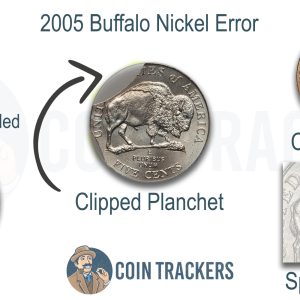
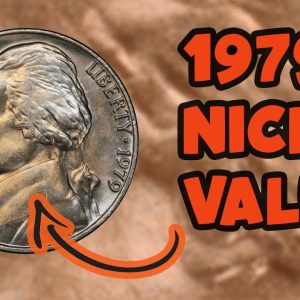
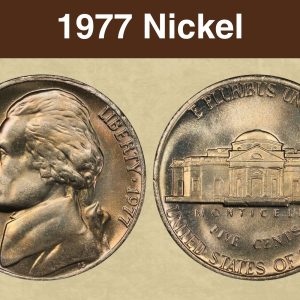
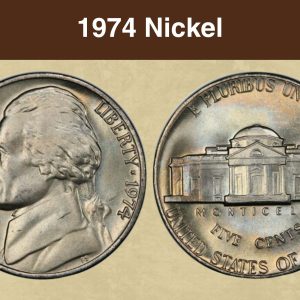
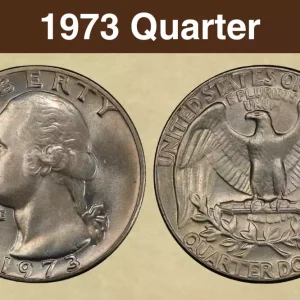
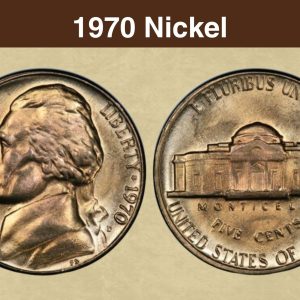
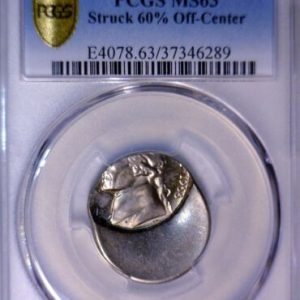
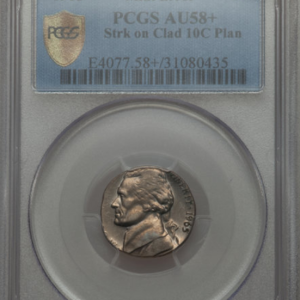
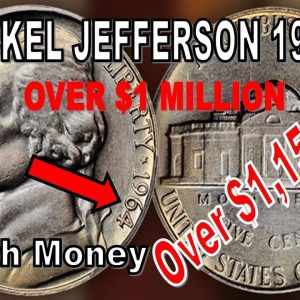
How much is a 1936 Buffalo nickel worth with no mint mark?
The 1936 P Buffalo Nickel, also called the no mint markBuffalo Nickel, was very highly anticipated. There were about 120 million of these nickels made — the highest volume for any nickel coin ever. These coins are worth about $1 if they receive a good grade, with a maximum value of about $45 in MS 63.
What is the error on the 1936 Buffalo nickel?
The 1936 Buffalo Nickel is notable for several errors, and the most well-known error is the 19369-D 3 ½ Legs Buffalo nickel. It is one of the most elusive varieties of the Buffalo nickel series.
What to look for on a 1936 Buffalo nickel?
A very rare coin in higher grades. Especially in 2022 a PCGS graded MS66 example was sold at auction for $1,20. A coin like.
How do I know if I have a rare Buffalo nickel?
Got them both graded. And this is my best grade. Even circulated grades sell for about $500. But the auction. Record $99,875. So make sure you’re looking for that valuable three-legged buffalo nickel.